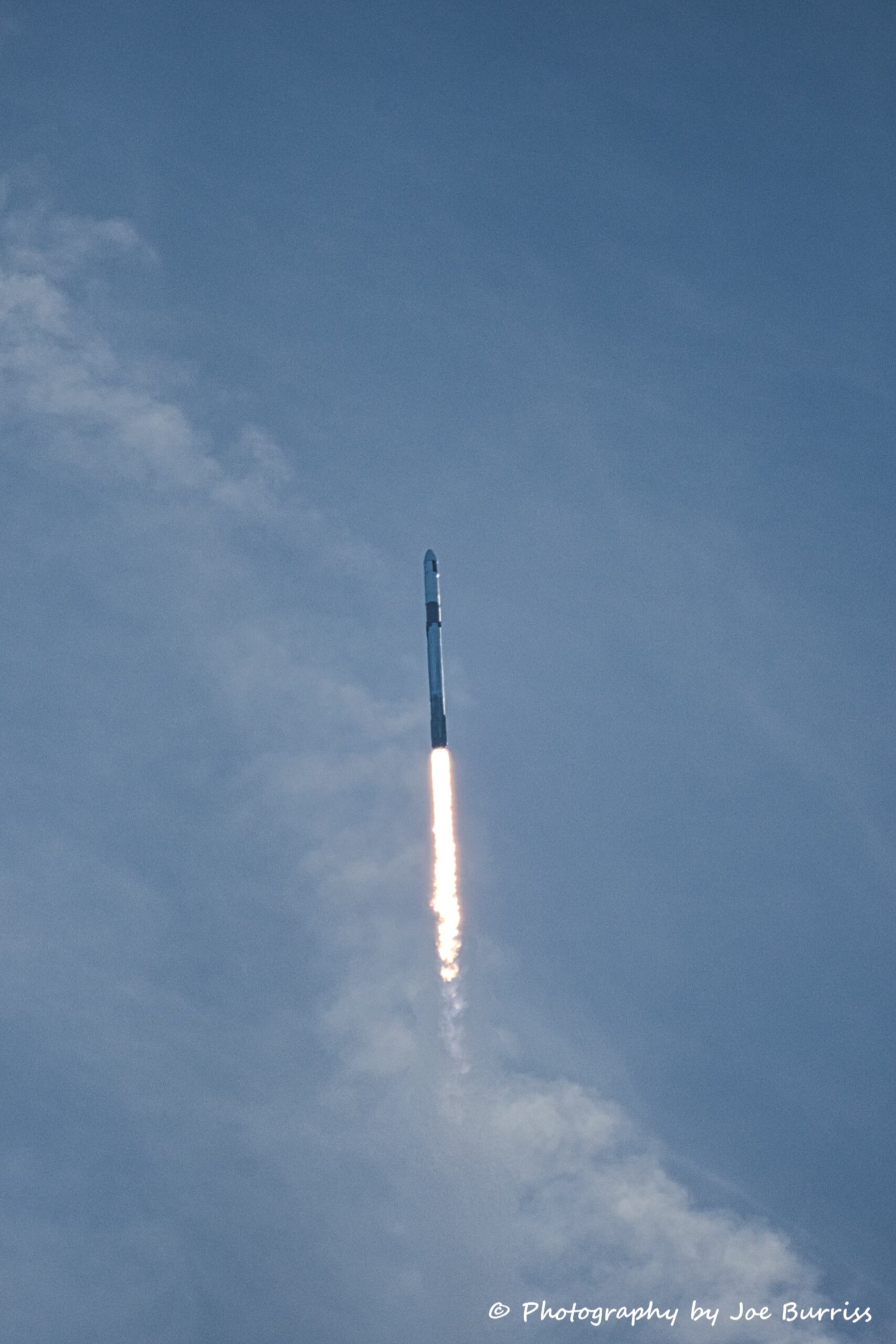Florida’s Space Coast is the area around Kennedy Space Center, on the Atlantic coast roughly east of Orlando. There are a ton of things to do in the area. We were here two years ago and again in December 2020. With the pandemic out of control we did different and fewer things this time.
Kennedy Space Center

Kennedy Space Center is a massive complex that has been the epicenter of the US exploration of space. Last time we took the tour and visited the museum and they are both well worth the visit and we would go again. Just standing beside a Saturn rocket or a space shuttle is amazing.
This time we watched three launches – two SpaceX launches and a Delta IV. It is an awesome experience to hear the sound of the rocket as it accelerates through the sound barrier and feel some of the vibrations of the rocket. Also, if you get lucky the first stage will return to earth at the space center and you can watch it land. The destination of the payload determines where the first stage lands. The options are at sea on a robot boat or back at the space center. In 2020 there were a record 36 launches and future years look even busier. However, be aware that rocket launches do not always happen as originally scheduled so you need to be flexible.

Canaveral National Seashore
Canaveral National Seashore contains nearly 58,000 acres of barrier island, open lagoon, coastal hammock, pine flatwoods, and offshore waters. With 24 miles of pristine beach, it is prime habitat for many threatened and endangered species, for example providing nesting beaches for several thousand protected marine turtles. Two thirds of the park is in Mosquito Lagoon. The lagoon is designated an estuary of national significance and an outstanding Florida water. It is one of the most diverse and productive estuaries in North America.

We accessed the seashore from Titusville for rocket launches and just enjoying the beach. There are 13 parking lots available for a day at the beach. Be aware that parking lot 13 and the beach north of it are used for nude sunbathing, so if that isn’t your thing stop before the end of the road. In the winter the seashore is never crowded, except when a rocket launch is scheduled.

Merritt Island National Wildlife Refuge
Merritt Island National Wildlife Refuge is found on 140,000 acres of Florida’s largest barrier island in the Atlantic Ocean. It is a birders paradise where thousands of migratory birds spend the winter. NASA ‘s Kennedy Space Center and visitor complex are also located on the island and NASA can and does restrict access to the refuge based on its operational needs. Typically the roads close 90 minutes prior to a launch.

The refuge traces its beginnings to the development of our Space Program. In 1962, NASA acquired 140,000 acres of land, water, and marshes adjacent to Cape Canaveral to establish the John F. Kennedy Space Center. NASA built a launch complex and other space-related facilities, but development of most of the area was not necessary. In 1963 the U.S. Fish and Wildlife Service signed an agreement to establish the refuge and in 1975 a second agreement established Canaveral National Seashore. Today, the Department of Interior manages most of the unused portions of the Kennedy Space Center as a National Wildlife Refuge and National Seashore.

One of our favorite places in the refuge is the Black Point Auto Drive, which is a one-way seven-mile loop through a number of marshes. You will find thousands of birds and also will usually see several alligators. We think this is the best place to view birds in the refuge. However, you never know what you will find beside the road. Joe found a bunch of egrets and wood storks in trees by a railroad crossing.





Our other favorite place is the Indian River Lagoon, which we access from a kayak launch site at the Haulover Canal. We don’t usually take cameras while kayaking so no photos. We do, however, usually get a chance to kayak near the dolphins and have seen turtles and rays at various times.



Salt Lake Wildlife Management Area

The Salt Lake Wildlife Management Area encompasses more than 7,800 acres in Brevard County and was located a short bike ride from our campground. It borders three lakes—South Lake, Salt Lake, and Loughman Lake. There are a lot of hiking and biking trails through the WMA that Joe enjoyed.

Blue Springs State Park
Hands down the best place to view manatees during the winter is Blue Springs State Park, located a bit northeast of Orlando. The park is very popular and will close when it reaches capacity, which regularly occurs during winter afternoons. So plan to arrive in the morning to ensure that you can get in. The day we visited the staff counted 345 manatees. We’re not sure how many we saw, but it was a bunch!


Water activities (swimming, fishing, kayaking) usually are closed during manatee season, but there are several hiking trails in the area, including one along the water where there are observation decks to allow viewing of the manatees. The manatees are attracted to the 72-degree water that the Blue Springs spew out at the rate of 102,000,000 gallons per day!


Florida’s Space Coast is loaded with things to do. The Atlantic Ocean, Merritt Island National Wildlife Refuge, Kennedy Space Center, Orlando Theme Parks (about an hour inland), Cocoa Beach, fantastic seafood (and all the other kinds of food are great too), Daytona Speedway, and we’re sure we missed a bunch of things. So if you are looking for a great place to vacation you can’t miss here.